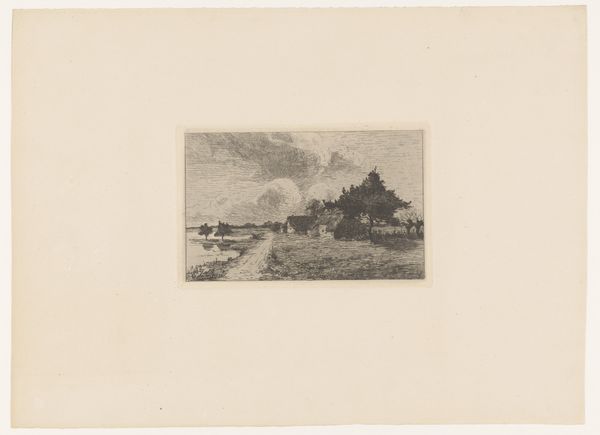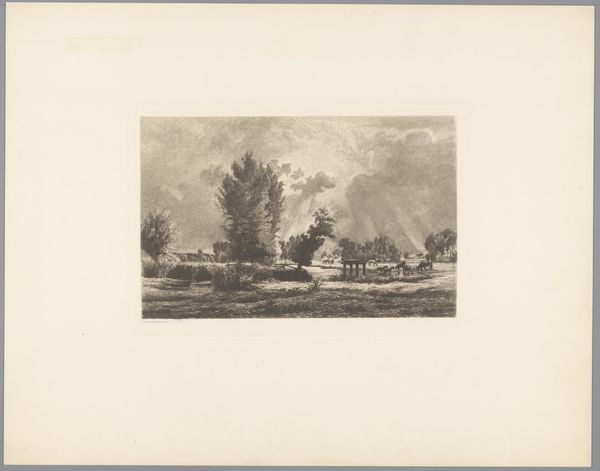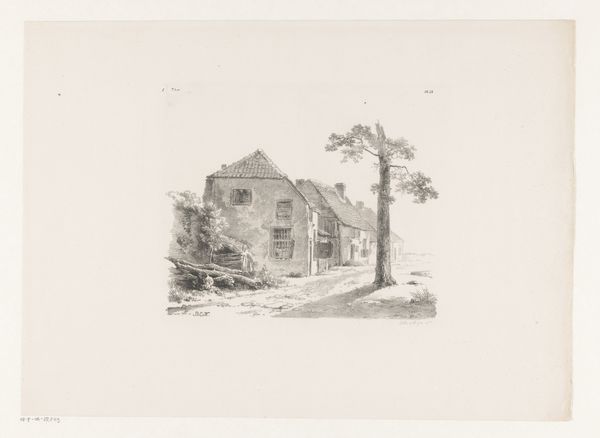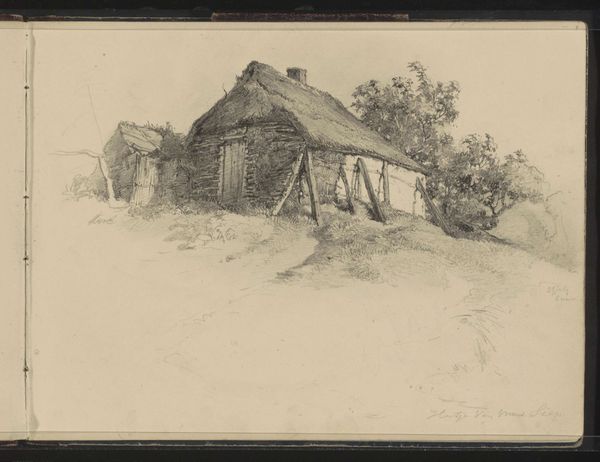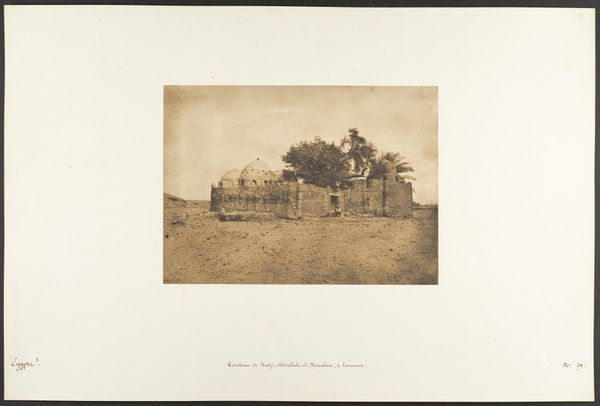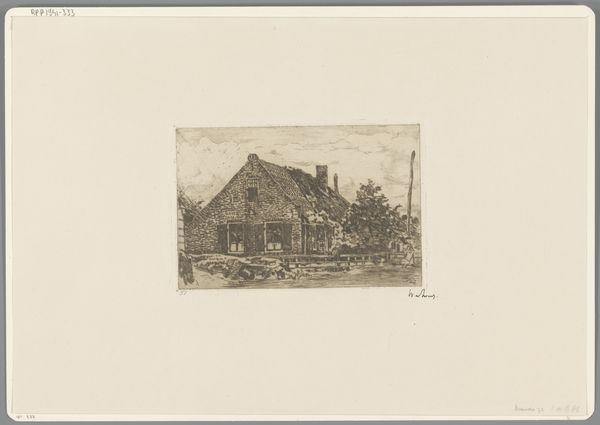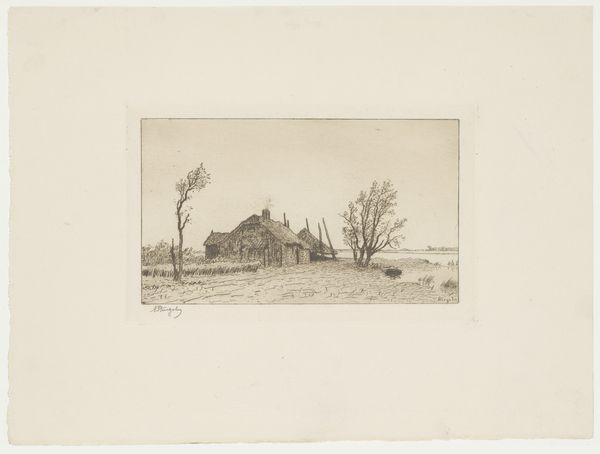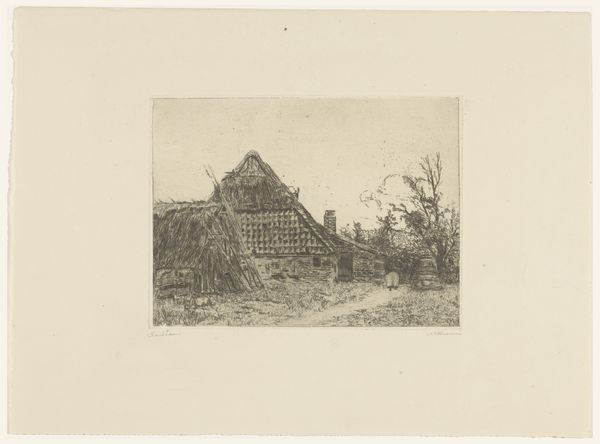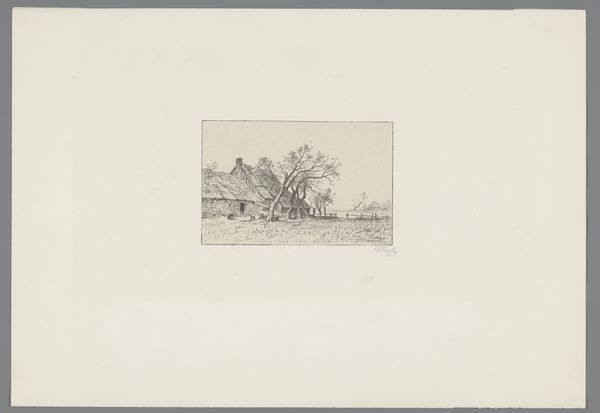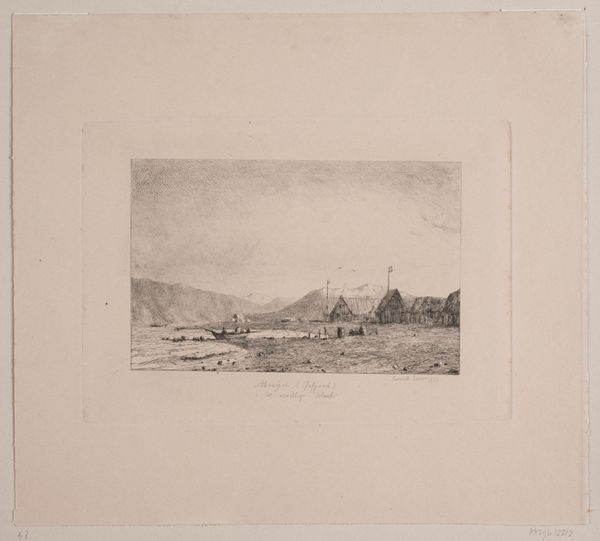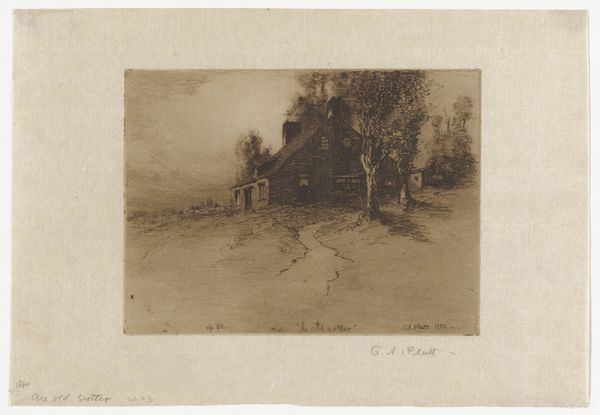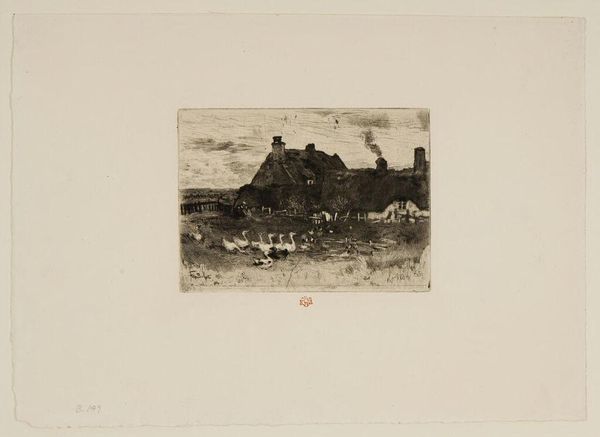
The Nurse, from Cahier de six eaux-fortes, vues de Hollande 1862
0:00
0:00
drawing, print, etching, paper
#
drawing
#
dutch-golden-age
# print
#
etching
#
landscape
#
paper
#
realism
Dimensions: 165 × 207 mm (image); 176 × 217 mm (plate); 355 × 518 mm (sheet)
Copyright: Public Domain
Curator: Immediately, there's a subtle charm to it, wouldn't you agree? Editor: It feels delicate. Look at how Jongkind built up those shaded areas through the density of etched lines. We're looking at "The Nurse, from Cahier de six eaux-fortes, vues de Hollande," created in 1862. The materials involved here—paper and etching ink—contributed heavily to this work. It’s currently held at the Art Institute of Chicago. Curator: And the scene itself, quite typical of Dutch landscape painting, wouldn't you say? It’s so rooted in its time; the imagery portrays this idealized view of pastoral life in Holland. Think about its initial audience, shaped by rapid industrialization, hungry for such glimpses of simpler existence. Editor: Definitely, it touches upon certain social needs of that historical context. Now, observe closely Jongkind's technique; how he scratches into the metal plate. We can imagine the artist himself, the tools in his hand, controlling the pressure to make the lines. The social aspect of this print would probably reside in its replicability as an accessible artwork. Curator: Exactly. I wonder, who owned these prints? Were they collected, traded, bound into albums? It speaks to the social circles and artistic tastes of the period, of course. I’m fascinated by the way art shapes and reflects society, mirroring back a view of themselves and their place in time. Editor: The print feels rather melancholic. Could it be that through this detailed process and landscape we also catch the shift happening during his time in Holland: the growth of capitalism altering production methods everywhere, the transition from a cottage industry of prints, like this one, to the start of mechanically reproduced artwork. Curator: Good point! It invites consideration of a disappearing way of life, not just in the scene but in the very means of production itself. Thanks for this insightful reflection about this piece. Editor: Of course, It’s a subtle etching, but its cultural nuances and materiality speak volumes about its epoch. It makes us ponder how much an image, crafted and printed in specific historical condition, affects us in today’s time.
Comments
No comments
Be the first to comment and join the conversation on the ultimate creative platform.
